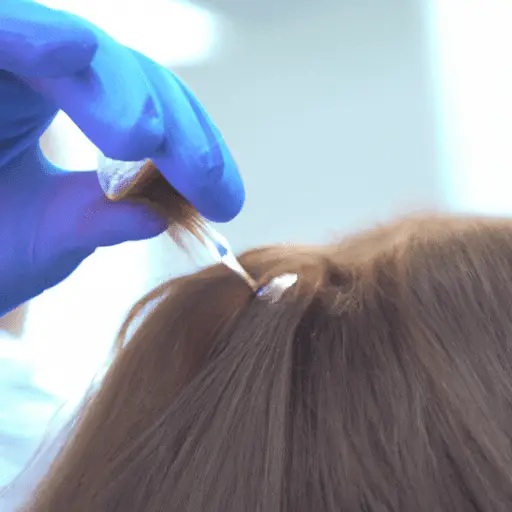Treating Hair Loss with PRP Injections
-
Table of Contents
- Treating Hair Loss with PRP Injections: A Comprehensive Guide
- Key Takeaways
- Introduction: Unveiling PRP Therapy for Hair Loss
- The Science Behind PRP Therapy
- Effectiveness of PRP Therapy for Hair Loss
- Safety and Suitability of PRP Therapy
- Future Research and Considerations
- FAQ Section
- 1. What is PRP therapy?
- 2. How does PRP therapy work for hair loss?
- 3. Is PRP therapy effective for hair loss?
- 4. Is PRP therapy safe?
- 5. Is PRP therapy covered by insurance?
- Conclusion: The Potential of PRP Therapy for Hair Loss
- Key Takeaways Revisited
Treating Hair Loss with PRP Injections: A Comprehensive Guide

[youtubomatic_search]
Key Takeaways
- PRP (Platelet-Rich Plasma) therapy is a promising treatment for hair loss.
- PRP injections stimulate hair growth by promoting increased blood supply to the hair follicle and increasing the thickness of the hair shaft.
- Studies have shown positive results, with patients experiencing significant hair regrowth after PRP treatment.
- PRP therapy is a safe procedure with minimal side effects, but it may not be suitable for everyone.
- More research is needed to establish the long-term effectiveness and optimal treatment protocol for PRP therapy for hair loss.
Introduction: Unveiling PRP Therapy for Hair Loss
Platelet-Rich Plasma (PRP) therapy is an innovative treatment that has gained popularity in recent years for its potential to combat hair loss. This non-surgical procedure utilizes the patient’s own blood to stimulate natural hair growth, offering a promising solution for those struggling with thinning hair or baldness. This article delves into the science behind PRP therapy, its effectiveness, and its potential as a hair loss treatment.
The Science Behind PRP Therapy
PRP therapy is based on the healing properties of platelets, a type of blood cell that plays a crucial role in clotting and wound healing. Platelets release growth factors that stimulate the repair and regeneration of tissues, including hair follicles. In PRP therapy, a sample of the patient’s blood is centrifuged to concentrate the platelets, creating a potent serum that is then injected into the scalp. The growth factors released by the platelets stimulate hair follicles, promoting hair growth and increasing the thickness of the hair shaft.
Effectiveness of PRP Therapy for Hair Loss
Several studies have demonstrated the effectiveness of PRP therapy for hair loss. A 2017 study published in the Journal of Cutaneous and Aesthetic Surgery found that PRP treatment led to significant hair regrowth in patients with androgenetic alopecia, a common form of hair loss. Another study published in Dermatologic Surgery in 2019 found that PRP therapy increased hair density and thickness in patients with hair loss.
Safety and Suitability of PRP Therapy
PRP therapy is generally considered safe, with minimal side effects. The most common side effects include mild pain at the injection site, temporary redness, and possible headache. However, PRP therapy may not be suitable for everyone. Patients with certain medical conditions, such as cancer, chronic liver disease, or a platelet disorder, may not be eligible for PRP therapy. It’s important to consult with a healthcare provider to determine if PRP therapy is the right treatment option.
Future Research and Considerations
While the results of PRP therapy for hair loss are promising, more research is needed to establish the long-term effectiveness and optimal treatment protocol. Factors such as the number of treatments needed, the interval between treatments, and the concentration of platelets in the PRP are still being studied. Furthermore, the cost of PRP therapy can be a barrier for some patients, as it is often not covered by insurance.
FAQ Section
1. What is PRP therapy?
PRP therapy is a treatment that uses the patient’s own blood to stimulate hair growth. The blood is processed to concentrate the platelets, which are then injected into the scalp.
2. How does PRP therapy work for hair loss?
PRP therapy works by stimulating hair follicles with growth factors released by platelets. This promotes hair growth and increases the thickness of the hair shaft.
3. Is PRP therapy effective for hair loss?
Several studies have shown that PRP therapy can lead to significant hair regrowth in patients with hair loss. However, more research is needed to establish the long-term effectiveness and optimal treatment protocol.
4. Is PRP therapy safe?
PRP therapy is generally considered safe, with minimal side effects. However, it may not be suitable for everyone, particularly those with certain medical conditions.
5. Is PRP therapy covered by insurance?
PRP therapy is often not covered by insurance, as it is considered a cosmetic procedure. The cost can vary depending on the provider and the number of treatments needed.
Conclusion: The Potential of PRP Therapy for Hair Loss
PRP therapy presents a promising solution for hair loss, with studies showing significant hair regrowth in patients. The treatment harnesses the body’s own healing properties to stimulate hair follicles, promoting natural hair growth. While PRP therapy is generally safe, it may not be suitable for everyone, and more research is needed to establish the long-term effectiveness and optimal treatment protocol. As the science behind PRP therapy continues to evolve, it holds great potential as a non-surgical treatment for hair loss.
Key Takeaways Revisited
- PRP therapy is a promising treatment for hair loss, stimulating hair growth by promoting increased blood supply to the hair follicle and increasing the thickness of the hair shaft.
- Studies have shown positive results, with patients experiencing significant hair regrowth after PRP treatment.
- PRP therapy is a safe procedure with minimal side effects, but it may not be suitable for everyone.
- More research is needed to establish the long-term effectiveness and optimal treatment protocol for PRP therapy for hair loss.
- The cost of PRP therapy can be a barrier for some patients, as it is often not covered by insurance.
[youtubomatic_search]


